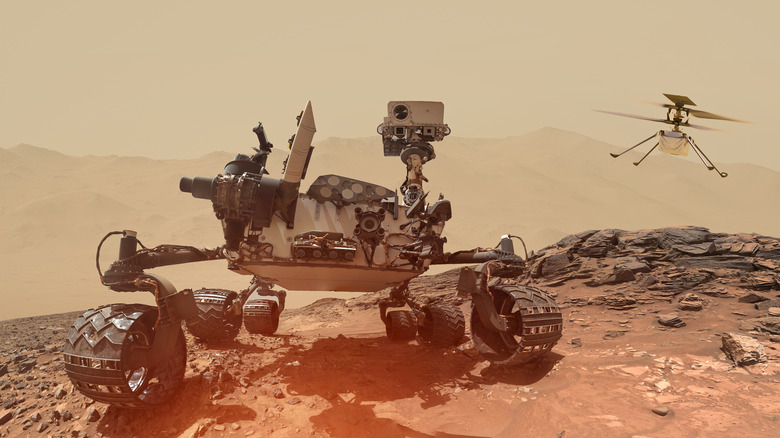NASA's Audacious Mars Sample Return Plan Now Includes Two Space Helicopters
NASA will be using space helicopters to help bring back its fresh batch of Martian samples, which are expected to reach Earth a decade from now. The Mars Sample Return Program isn't just ambitious, it has also evolved quite a bit from its early conceptualization. In 2018, NASA and the European Space Agency proposed a lengthy process comprised of at least three missions (via ESA). First, NASA's Perseverance Rover will be collecting vital Martian samples in key locations.
The next step involved a Sample Fetch Rover that would land nearby to collect those samples, bringing them to a small rocket called a Mars Ascent Vehicle, before launching into space. Afterward, it will rendezvous with a spacecraft that will bring the samples back to Earth.
There have been various developments over the years since 2018, including the introduction of the ESA's cutting-edge autonomous robot arm known as the Sample Transfer Arm. While this mechanical arm already helps make the sample retrieval process more feasible, NASA found another way to increase the mission's chances of success even further: using space helicopters
NASA space helicopters to the rescue
The Mars helicopter isn't anything new, with NASA considering the idea starting in 2015 before eventually integrating it into the Mars 2020 mission in 2018. Aside from its potential of improving Unmanned Aerial Vehicles on Earth, NASA determined that space helicopters can be just as beneficial for its sample retrieval program. Instead of deploying both the Sample Fetch Rover and its associated lander, the main Sample Retrieval Lander will simply be equipped with two space helicopters (via NASA). These specialized "sample recovery helicopters" will be utilizing the same framework as NASA's Ingenuity Mars helicopter seen in the video above. The question is, how much better will these space helicopters perform compared to the slower yet more robust rover?
NASA claims the Ingenuity helicopter already surpassed its life expectancy by more than a year, successfully performing almost 30 test flights in the process. Using drones based on the tried-and-tested space helicopter design can not only hasten the sample retrieval process but also provides additional means of doing so. Needless to say, those space helicopters just might be the best chance of getting those alien samples back to Earth ASAP, especially since the lander containing them won't be launched until the summer of 2028. Here's hoping its estimated 2033 arrival on Earth will be worth the wait.
